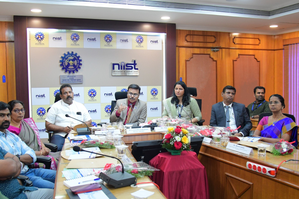Thiruvananthapuram: Fortified Rice Kernels (FRKs) are crucial for the country to collectively address malnutrition and anemia as they have been scientifically proven to be nutritious, cost-effective, scalable and sustainable, said experts.
This was pointed out at a stakeholders meet on FRKs organised by CSIR-National Institute for Interdisciplinary Science and Technology (CSIR-NIIST), here on Monday.
H N Mishra, Emeritus Professor, (Food Technology), IIT Kharagpur, said in the pursuit of the comprehensive strategy to eradicate micronutrient malnutrition, fortification has emerged as an efficient and cost- effective alternative.
Calling for an urgent intervention, Mishra said as per WHO data, about 37 per cent of pregnant women and 40 percent children under five globally, suffer from iron deficiency.
As per the National Family Health Survey 2021, about 58 per cent of children, 57 per cent of women and 22 percent of men in India are anemic.
“To address anemia and micro-nutrient deficiency, the Union Government allocated a total budget outlay of Rs 174.64 crore for a period of three years from 2019-20 under a pilot scheme under PM’s POSHAN Abhiyaan. It envisages distribution of fortified rice through the public distribution system,” said Mishra.
Mishra said the initiative has reached around 12 crore children and 10.3 crore women across the country. The government aims an outreach to 50 crore beneficiaries under the scheme by 2024. Commodities that are being fortified in India are milk, oil, wheat, rice and salt.
C Anandharamakrishnan, Director, CSIR-NIIST said currently, there are 18,227 rice mills equipped with rice-nutrient blending infrastructure, indicating a widespread capacity for producing fortified rice.
Citing that grain fortification has the potential to reduce anemia and improve iron and vitamin levels, Dr C Anandharamakrishnan said CSIR-NIIST will come up with its own FRK soon.
“Since food security is a concern, we need healthier products and focus on fortification of grains. To balance over-nutrition and under-nutrition, we need to look for alternative proteins,” said Anandharamakrishnan.
Suggesting that FRK is a good business to start, Anandharamakrishnan said the fortified rice market is expected to grow at a compound annual growth rate of 6.3 per cent and reach a market size of $28.4 billion by 2027.
Speaking on ‘Production of fortified rice and quality control at rice mills’, Milli Asrani, Programme Policy Officer, Food Technology, United Nations World Food Programme, New Delhi, said fortification of rice provides an opportunity to add micronutrients lost during milling and polishing. It also helps add other micronutrients such as iron, zinc, folic acid, vitamin B-12 and Vitamin A.
Noting that milling of rice removes fat and micronutrient rich bran layers to produce the commonly consumed starch white rice, she said polishing further removes 75-90 percent of Vitamin B-1, Vitamin B-6, Vitamin E and Niacin.
Commenting that food fortification is a global intervention that addresses the issue of micronutrient deficiencies, Asrani said it is scientifically proven, cost-effective, scalable and sustainable.
Citing WHO studies, she said fortification costs only $0.05 to $0.25 per person per year.
The apprehension that fortified rice is plastic rice and FRK causes change in taste and smell of rice is completely baseless.
–IANS


Comments are closed.